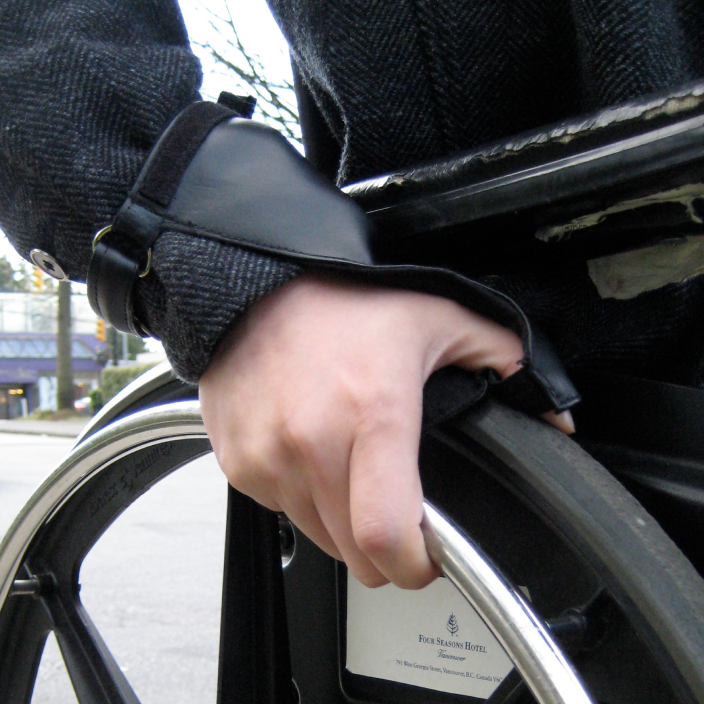Mobility restrictions impact how we dress ourselves
We studied people with 3 types of spinal cord injuries to understand some of the motor and sensory impairments they experience and what that means for day-to-day activities like getting dressed.
- Quadriplegia usually results in lost function from the neck down including all 4 limbs.
- Thoracic paraplegia usually results in loss of motor or sensory function from waist down, including abdominal muscles. The person still has use of their neck, arms and hands.
- Lumbar paraplegia usually results in lost function of legs. The person still has control and use of their upper body.
Most clothing designs do not consider the needs of people with motor and sensory restrictions, making it difficult for them to wear.
For this study, we focused on people with thoracic and lumbar paraplegia.

Meet Eileen
Our co-creator shared her barriers to daily living. Her experiences and expertise helped guide us on how we could solve problems.
What we heard

Putting pants on the bed
Some people have to place clothing on the bed before sleeping in order to get dressed.

Taking pants on and off is a challenge
You often have to slide back and forth while lifting yourself up.

Preference between sitting or laying down
Some people prefer putting clothes on their beds and some prefer sitting down.

Long coats create bulk
In a sitting position, long coats don’t hold its intended shape, causing more effort to straighten the coat.

Hand protectors don’t go with everyday wear
Gloves designed for wheelchair users are often utilitarian and not fashionable.

Wrists often get dirty
Gloves or hand protectors are usually worn to avoid getting your hands dirty.
Design iterations
We explored construction methods, made patterns, and repurposed from existing clothing. Note that we are not fashion designers by trade so we had to be creative in our approach.

Moving the zippers from the centre to the sides made it easier to slide in and out of pants.

Exploring new ways sew zipper so that it camouflages as seam line.

Explore seam placement, exposed back while blend in with everyday clothing.

Adapting and creating new pattern.

How much coverage to protect the hand?

Hand wrap is secured with thumb and pinky.
Features

Easier to use
Hidden zippers are located where fold lines are usually present. This creates more surface area to place both feet into the pants then zipped up.

Designed for sitting
The construction of the winter coat lays flat to the body. There’s also a detachable panel to make your coat longer if desired.

Protect hands and gloves
Designed to protect your wrist from getting dirty. The hand wrap can be worn with or without gloves and is adjustable with hook and loop to conform with multiple sizes.
Steps

Secure pants to chair

Slide to wheelchair

Slide legs into pants

Zip trousers on the sides

Put on coat

Attach flaps

Put on wraps

Ready to go
Moving forward
The duration of this project was for 3 months and we delivered a prototype for each pants, coat, and hand wrap. We’ve achieved a lot in that time and there is still more to be explored.
For this to be commercialized, we would need to prototype various sizes to test for fit on different body types and create patterns for production.
This project has opened my eyes to how mobility restriction could greatly impact our day-to-day life and it kickstarted my journey to design for more inclusive assistive devices.
Media coverage

On April 23, World Journal Vancouver documented the Assistive Design Solution 2010. The exhibit showcased student projects from University of British Columbia and Emily Carr University of Art and Design.